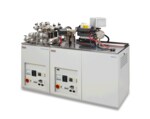Search
Espectrómetro de masas para gases nobles de vacío estático Argus VI™
Mejore la precisión de la edad en la datación Ar-Ar por orden de magnitud. Consiga los cinco isótopos de argón simultáneamente con el espectrómetro de masas de gases nobles de vacío estático Thermo Scientific™ Argus VI™.
Mida los cinco isótopos de argón simultáneamente con el espectrómetro de masas de vacío estático (SVMS) Thermo Scientific™ Argus VI™. El vanguardista sistema Argus VI probado sobre el terreno es una solución de alta precisión para el análisis de pequeñas cantidades de argón y otros gases nobles. Su diseño compacto y extremadamente robusto junto con su excelente óptica iónica y el software de control líder en el sector hacen que este analizador SVMS del sector magnético sea un elemento perfecto para cualquier laboratorio, independientemente del tamaño y del rendimiento.
- Consiga una sensibilidad de primera clase a partir de un volumen interno bajo (∼ 700 cc).
- Aumente la productividad y reduzca el tiempo de análisis mediante el análisis simultáneo de los cinco isótopos de argón, sin saltos de picos.
- Efectúe múltiples mediciones dinámicas con la exclusiva tecnología deflectora de haces.
- Los instrumentos tienen una larga vida útil gracias al uso de detectores Faraday para la mayoría de los análisis.
- Mejore el rendimiento con altas tasas de recuento, lo que se combina con un nivel de ruido muy bajo a partir de la tecnología de multiplicador CDD.



